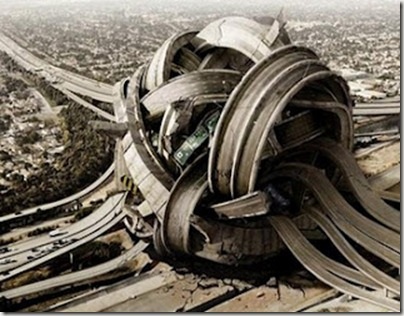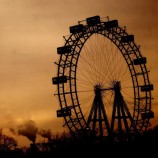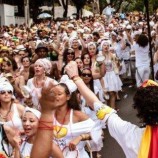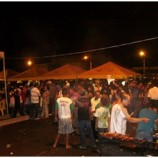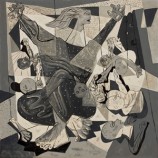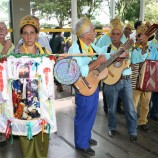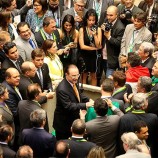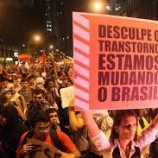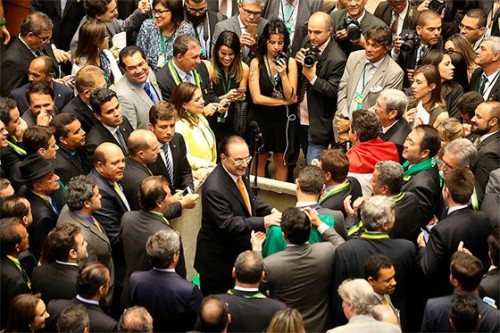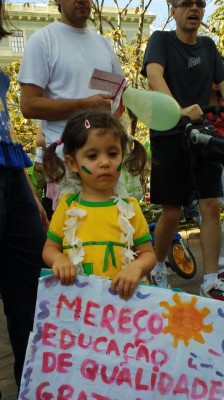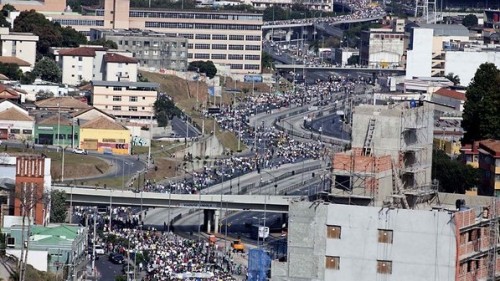Nowadays in the big cities, despite offering a wide variety of just about everything in the way of information, services, crafts, cuisine, among others, they also represent traffic jams, noise, polluted air, high temperatures, floods, insecurity, environmental degradation and visual pollution. To sum it all up; chaos that generates a disease all too common in today’s world: stress.
According to Lana Cavalcanti, cities are an agglomeration of people and objects. Observing this concept and the present reality, it seems that Belo Horizonte, like other cities, is organizing itself more in function of its objects rather than of its people. This is precisely what the “business” vision is characterized by. People are treated like robots or mechanical parts to drive the gears of this system, while human values and necessities are put in third, tenth or no place at all. Public-Private Promiscuities arise that manage to gather in one sole initiative the political greed for power with the financial backing from “executives”.
It’s a good thing that this system is so visibly decrepit that active, intelligent people are seeking loopholes for the defense of human rights. After all, cities should be built, planned and administered while focused on the wellbeing of its inhabitants. They should revolve around services such as health, education, leisure, culture and transportation. But the “executive” driving force tramples over everything, often using the system’s very own trap: increasingly concentrated profits, greed, and a lack of commitment to the collective populace.
When this commitment is present, it enables the organization and mobilization of society which then often manages to apply pressure on governmental authorities, making them correspond to their function.
The city of Belo Horizonte was founded as the capital of the Brazilian State of Minas Gerais in 1897 due to the decay of the gold cycle and the new mining focus in the Iron Quadrangle. More than a hundred years later, this very iron ore extraction that the city was founded on is what most degrades our surrounding natural resources and which brazenly threatens our water springs assigned to cynical and blind eye politicians who have become mere instruments of their mining mafia financers. The wealth of waterways, the great mild climate and its location were all factors that made the former village of Curral Del Rey so attractive for such a noble choice. After the advancement of industrialization, the city’s population has doubled, reaching one million inhabitants in the 60’s. The city’s metropolitan region was instituted at this time.
This uncontrolled industrial process has withdrawn whole populations from the countryside and generated conglomerations of people: the big cities. The structure of these centers lead to the peoples’ general loss of identity, and in the case of Latin America, perpetuates a new step in the colonization process. But we do not lose heart. Human beings have an incredible capacity for rebellion, despite sometimes preferring to conveniently follow the herd. Many of us are born into big cities but not for this reason do we lose our identity and vocation to solidarity. There are still neighborhood associations and social movements today that have succeeded through struggles and vindications to maintain preserved green areas.
In 1992, thanks to the mobilization of the communities of Itapoã, Plateau and other surrounding neighborhoods, the Lagoa do Nado park was created in an old farm where a handful of “enterprising” citizens once intended to build a set of houses, destroying one of the municipality’s few existing green areas. There is another rare forested area a short distance from the Park where, as always, the threat of urban verticalization is imminent, which is why the Preserve the Forest of Planalto movement was created in its defense. Through community organization and actions taken by the public prosecutor’s Office, the venture has been stopped. According to Mr. Antonio Matoso, a resident of the Plateau neighborhood and a member of the Residents’ Association, the fight has lasted two years and is hard going, as the Mayor and none other than the Environment Secretary himself are clearly defending business interests, unaware of the environmental aspect. He is also of the opinion that the urban verticalization occurring in the region of Pampulha is absurd.
For the architect Dorinha Alvarenga, if there were an action that could in fact guarantee Belo Horizonte becoming a better place to live, it would be its urban and environmental planning in a medium and long term perspective. She also says that the laws should be modified to better attend social demands. “In my view, the interests of executives and property very much compromise the population’s quality of life.”
If our cities are not reorganized and rethought down to the destination of wastes, water treatment, means of transport, the preservation of green environments, the relationship between people and a suitable adaptation to the cycles of nature, they are condemned to walk in irreversible chaos. I leave the question to the reader: Will a sustainable city be possible?
Related Articles


